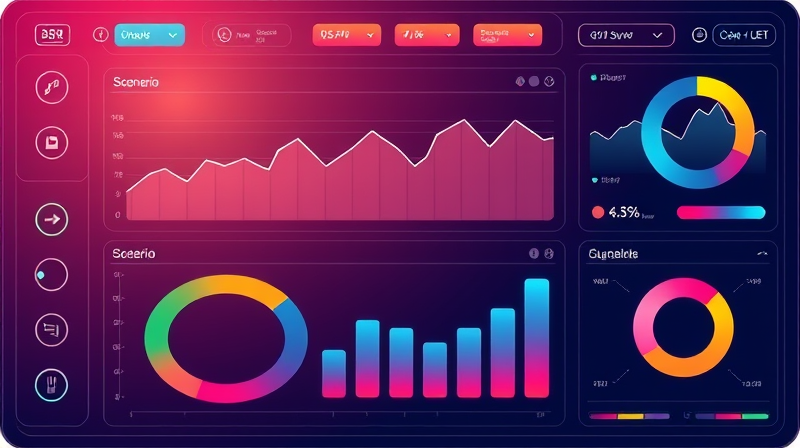
In an era of heightened volatility and shifting economic landscapes, risk managers stand at the frontline, tasked with safeguarding assets and guiding firms through unpredictable downturns. This article delves deeply into how these professionals deploy sophisticated hedging techniques to ensure resilience and stability even in the most challenging of market cycles.
Successful hedging requires more than theoretical models; it demands a continuous dialogue with market data, proactive adjustments, and unwavering discipline. By sharing insights from real-world examples, best practices, and emerging trends, this guide aims to empower both seasoned professionals and newcomers alike.
Economic cycles are defined by phases of expansion and contraction, shaped by macroeconomic indicators, geopolitical events, and technological shifts. During downturns, market losses can accumulate rapidly, undermining balance sheets and eroding stakeholder confidence.
Recent years have showcased extreme swings—inflation surprises, central bank policy shifts, global conflicts disrupting commodity flows, and supply chain breakdowns. Such events have led to currency devaluations of over 10% within weeks and bond yield swings exceeding 100 basis points.
By implementing timely hedges, risk managers can react to sudden market swings, reducing exposure before shocks intensify. This proactive stance is critical for preserving capital and purchasing power when asset valuations plummet or currency fluctuations threaten operational budgets.
At its core, hedging is not a strategy to chase profits but a means to minimize downside while retaining upside. It aims to control risk, ensuring that losses remain within acceptable parameters without sacrificing the potential for gains if markets rebound.
A solid hedging framework rests on three pillars:
Beyond these pillars, risk managers align hedging activities with the firm’s risk appetite, capital structure, and strategic goals. This alignment ensures that hedges support core business objectives, whether preserving cash flow, protecting earnings, or maintaining credit ratings.
Risk managers have an array of tools at their disposal. Choosing the right mix depends on the specific risk profile, regulatory constraints, and cost-benefit analysis of each instrument. Below are some of the most common approaches:
Each instrument carries its own cost structure and liquidity profile. Risk managers conduct detailed scenario analyses, adjusting not only the size of hedges but also tenors, strike levels, and collateral requirements.
Implementing these strategies requires ongoing measurement and adjustment. As market conditions evolve, so must the strength and composition of a hedge. For instance, a company might roll short-dated futures into longer-dated contracts if volatility patterns shift.
By comparing instruments side by side, risk teams can determine which tools align best with liquidity preferences and margin requirements. Calibration of these models often relies on historical volatility measures, stress test outputs, and sensitivity analyses.
Some firms also layer dynamic hedging, adjusting positions in real time as delta exposures shift, creating a more responsive risk control framework.
The 2008 financial crisis remains a benchmark for hedging success. Certain hedge funds outperformed peers by proactive and early positioning in credit default swaps, effectively shorting mortgage-backed securities before the collapse. This dynamic rebalancing allowed them to generate positive returns even as broader markets lost over 50% of their value.
In 2020, the rapid onset of the COVID-19 pandemic triggered unprecedented market turmoil. Firms that had hedged equity exposure with VIX futures or protective puts managed to avoid some of the steep drawdowns, while companies hedging supply chain costs through forward contracts navigated price spikes with greater predictability.
Energy companies have similarly used hedges to protect profit margins. By locking in oil prices when benchmarks dipped below production costs, these firms guaranteed a minimum revenue floor, safeguarding operations and enabling stable planning.
Effective hedging programs share common characteristics that distinguish them from ad-hoc or reactive approaches. Key best practices include:
Embedding a strong risk culture is equally important. Regular training sessions, tabletop exercises, and cross-functional reviews help ensure that all stakeholders understand the rationale and mechanics behind each hedge.
Transparent reporting to boards and senior management keeps hedging activities aligned with corporate strategy, reinforcing trust and accountability.
No hedging strategy is without its challenges. Model risk can arise when assumptions embedded in valuation and risk models diverge from actual market behavior. Illiquidity in certain derivatives can lead to steep slippage, especially during crisis events.
Advancements in technology are reshaping how hedges are designed and executed. Real-time monitoring platforms, algorithmic trading solutions, and machine learning models enable rapid analysis of vast data sets and dynamic repositioning of hedges.
Moreover, risk managers are expanding their focus to include sustainability and ESG risks. Firms are exploring hedge instruments tied to carbon credit prices or renewable energy indices, seeking protection against regulatory changes and market transitions.
Stress testing hedges against extreme but plausible scenarios remains a cornerstone of forward-looking risk frameworks, helping firms anticipate outcomes and adjust positions before crises unfold.
In turbulent economic cycles, hedging is not a luxury but a necessity. By adhering to core principles, deploying a diverse toolkit of instruments, and maintaining rigorous governance, risk managers can shield portfolios from extreme losses while retaining the ability to benefit from market recoveries.
Ultimately, successful hedging hinges on a blend of disciplined process, technological sophistication, and human judgment. As markets continue to evolve, so too will the art and science of risk management, ensuring that firms remain resilient in the face of tomorrow’s uncertainties. Armed with these practices, organizations can navigate even the most daunting headwinds with confidence.
References













